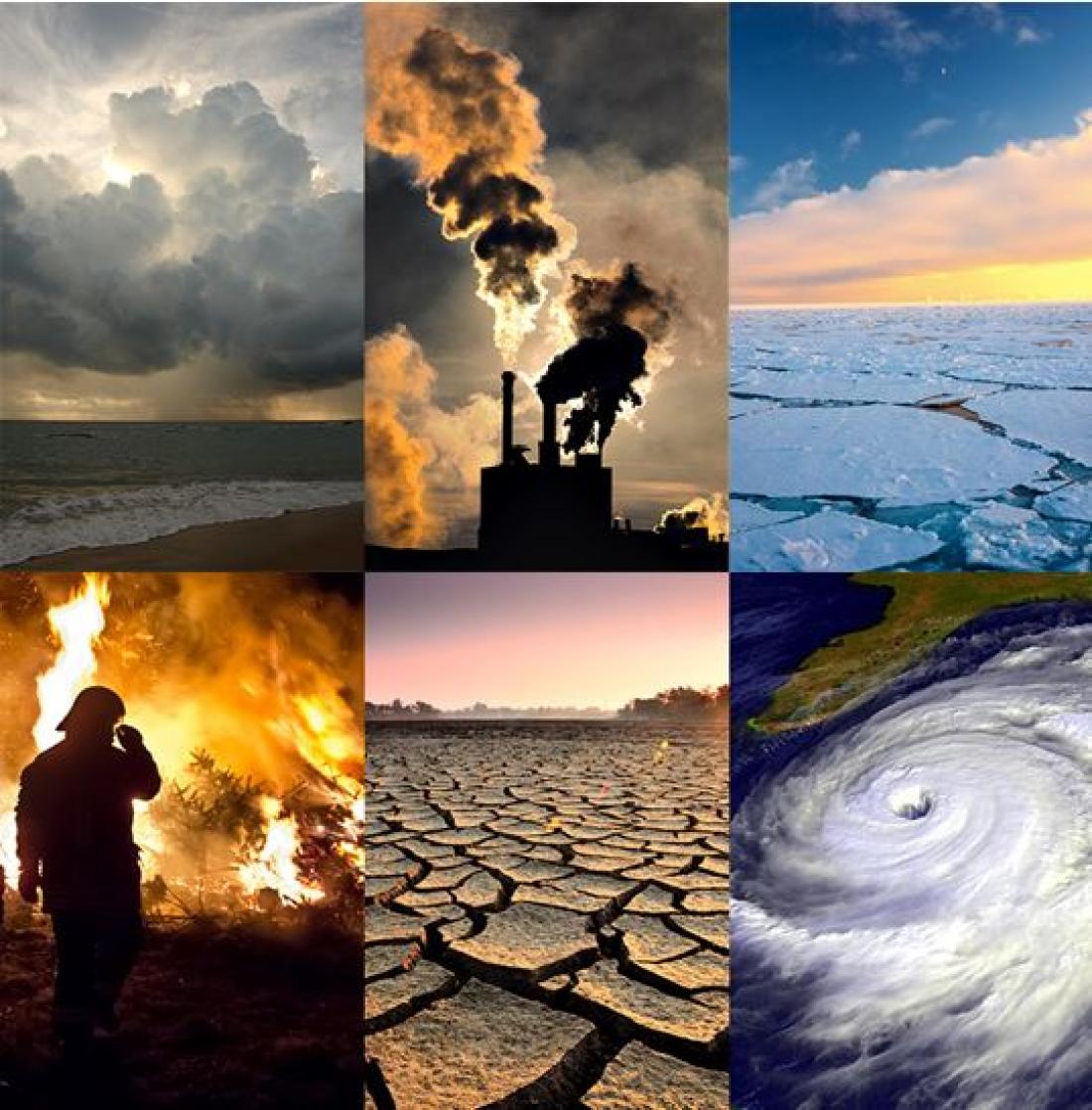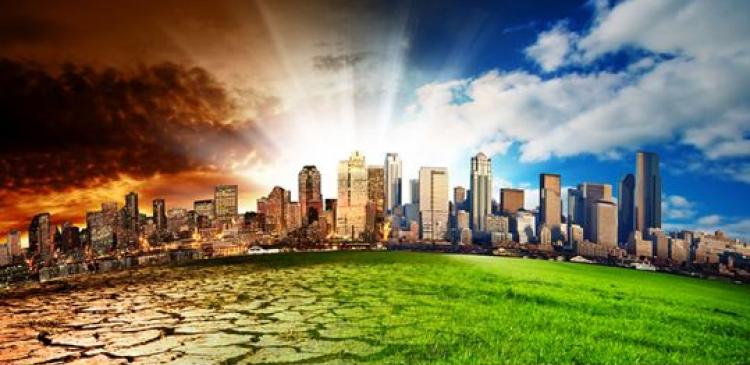Images of Climate Change.
In the “age of human”, or the Anthropocene, human activities are directly changing the planet’s ecosystems through the influx of greenhouse gasses (GHGs), in particularly carbon dioxide (CO2). This century marked the highest amount of carbon dioxide (CO2) emitted, breaking records of the past 650,000 years, pushing the climate to ‘a point of no return’.
Since we spend most of our time within buildings, it is thus important to ensure that our living environment is either positively impacting the environment or does not negatively impact the environment. As developing countries raise their standards of living and services, electricity consumption in buildings is expected to rise exponentially. This has been proven, with the increase of GHG emissions from developing countries in Asia in the last three decades.
The building sector’s primary contribution of GHG emissions is the result of fossil fuels used to generate electricity, or for building operations in the form of fuel combustions. Electricity is the main form of energy consumed in the building sector, with nearly 60% of the world’s total consumption, and commercial buildings in developed countries like the United States and Japan are driving peak demand and is expected to rise further. The bulk of GHG emissions from the building sector are largely produced in the operational phase (80-90%) from energy consumption for heating, cooling, lighting, ventilation and appliances.
In the wake of the President of the United States’ regrettable decision to rescind from the Paris Agreement, which seeks to ensure “a global temperature rise this century well below 2 degrees Celsius”, a Convention ratified by 148 Parties (countries), normal citizens, industry players, innovators, corporations, mayors and governors have taken independent steps in pledging their commitment to the Paris Agreement. Climate change skeptics erroneously believe that the planetary system is too vast to be impacted by human beings, and that we could not possibly alter natural elements and the natural course of earth’s ecosystems.
Imagine this: the Earth is balancing on a slice of ice in a boiling pot, sooner or later the pot will start to boil, the ice will melt, and Earth will drown. We have not altered the natural course of melting point, but simply manipulated the element of water through the application of heat to boil the water. This is the simple explanation to Global Warming, the trapping of heat in our atmosphere as a result of all the carbon we have emitted.
Researchers at Centre for Building, Construction & Tropical Architecture (BuCTA), University of Malaya, conduct research that encompasses a wide range of issues from code compliance to sustainability, from energy conservation to post-occupancy evaluations, and aims at providing an impetus for research in the application of building science principles to the design, and construction of buildings. The research led by Dr Suzaini Zaid has investigated wide ranges on the building sector impact on climate change, including:
1. GHG emission of low-cost housing in Malaysia using UNEP-SBCI Common Carbon Metric
2. Low-Cost Housing in Malaysia: A Contribution to Sustainable Development?
3. Lack of Energy Efficiency Legislation in the Malaysian Building Sector Contributes to Malaysia’s Growing GHG Emissions
4. The Need for Energy Efficiency Legislation in Malaysian Building Sector. A Comparative Study of South East Asian Policies
5. Carbon Abatement Module for University of Malaya Eco-campus: Addressing Urban Heat Island and Climate Change Impact
6. Green offices, a healthy work place of the future? Investigating the impact of green offices on occupant's behaviour and work efficiency
7. Building Control Innovation: Environmental Policy and Legislative Review on Malaysian Affordable Housing Construction
8. SULED-BIM: Sustainability Led Design Through Building Information Modelling
9. Energy Prediction versus Energy Performance of Green Buildings in Malaysia. Comparison of Predicted and Operational Measurement of GBI Certified Green Office in Kuala Lumpur
10. Environmental Assessment Schemes for Non-Domestic Building Refurbishment in Malaysian Context
Through years of research in the Malaysian building industry, the biggest challenge to achieving energy and carbon emissions reduction seems to be the relatively cheap price of electricity. And a yet bigger challenge for the industry is to refurbish existing buildings to become more energy efficient and lessen its long term foreseeable environmental impacts. It is easier to design and build new ‘green’ buildings than to push building inhabitants and old building systems to perform in a more environmentally friendly manner. The building industry must push forward to innovating and incorporating holistically clean and renewable energy productions with building systems, and promote more environmental awareness to industry players and inhabitants.
Research and innovation in the building industry in the last decade included the green building rating tools, energy simulation, green and sustainable architecture, and more. However, research has also shown that even with these efforts, buildings cannot achieve a fully ‘green’ potential if the users are not actively engaging and aware of such ‘green’ features. Targeted behaviour encouragement such as switching off all electronic, lighting and air conditioning before leaving the office will make a difference in reducing energy load. Green building rating tools are an effective tool to reduce electricity consumption, but using this tool alone and certification does not guarantee energy savings. A well-managed and efficient building operations of a conventional building can perform as well as or even better than a green building. The action to climate change is now being trickled down to all levels of society, and everyone has an important part to play.
For further information please contact:
Dr. Noor Suzaini Binti Mohamed Zaid
Department of Building Surveying
Faculty of Built Environment, University of Malaya,
50603 Kuala Lumpur, Malaysia
email: [email protected]





